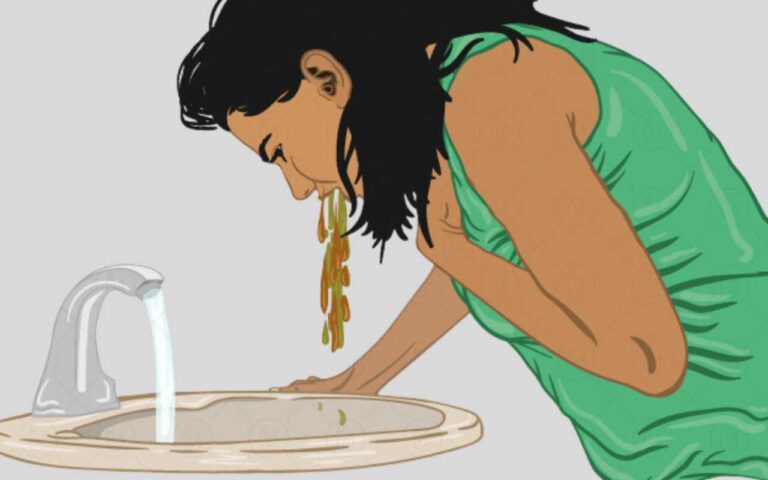Blood Cancer: Causes, Types, and Symptoms
Blood Cancer, also known as hematologic cancer, is a broad term used to describe various forms of cancer that affect the blood, bone marrow, and lymphatic system. Blood cancers disrupt the normal production and function of blood cells, leading to a range of health issues. Understanding the causes, types, and symptoms of blood cancer is crucial for early detection and effective treatment. This article explores these aspects in detail. (blood cancer diseases)
Causes of Blood Cancer
The exact cause of blood cancer is not fully understood, but a combination of genetic and environmental factors is believed to contribute to its development. (blood disease cancer)
- Genetic Mutations: Mutations or changes in the DNA of blood cells can lead to uncontrolled growth and division, which is a hallmark of cancer. These mutations can be inherited or acquired over a person’s lifetime. Certain genetic conditions, such as Down syndrome, have been linked to a higher risk of developing blood cancer.
- Radiation Exposure: Exposure to high levels of radiation, such as from radiation therapy for other cancers or nuclear accidents, increases the risk of developing blood cancer. Even low levels of radiation exposure over a long period, such as through certain medical imaging tests, may slightly increase the risk.
- Chemical Exposure: Prolonged exposure to certain chemicals, such as benzene (found in industrial environments, cigarette smoke, and some household products), has been associated with an increased risk of blood cancers, particularly leukemia.
- Viral Infections: Certain viruses have been linked to the development of blood cancers. For example, the Epstein-Barr virus (EBV), which causes infectious mononucleosis, has been associated with an increased risk of lymphoma. Human T-cell leukemia virus (HTLV-1) is another virus known to cause a rare type of blood cancer.
- Weakened Immune System: Individuals with a weakened immune system, either due to certain medical conditions (like HIV/AIDS) or immunosuppressive drugs (used after organ transplants), are at a higher risk of developing blood cancer. A compromised immune system may be less effective at identifying and destroying abnormal cells, allowing cancerous cells to proliferate.
- Family History: A family history of blood cancer can increase the likelihood of developing the disease. While most cases of blood cancer are not directly inherited, having close relatives with blood cancer may indicate a genetic predisposition.
- Age and Gender: Blood cancer can occur at any age, but the risk increases with age. Certain types of blood cancer are more common in specific age groups. For instance, acute lymphoblastic leukemia (ALL) is more common in children, while chronic lymphocytic leukemia (CLL) is more common in older adults. Additionally, some blood cancers, like Hodgkin lymphoma, are slightly more common in men than in women.
Types of Blood Cancer
Blood cancer can be classified into three main types: leukemia, lymphoma, and myeloma. Each type affects different cells and tissues within the blood and lymphatic system. (cancer in bloodstream)
1. Leukemia
Leukemia is a cancer of the blood-forming tissues, including the bone marrow and lymphatic system. It leads to the production of abnormal white blood cells, which crowd out healthy blood cells and impair the body’s ability to fight infections. There are several types of leukemia, including:
- Acute Lymphoblastic Leukemia (ALL): This is the most common type of leukemia in children but can also occur in adults. ALL progresses rapidly, and the abnormal cells in the bone marrow can quickly spread to other parts of the body.
- Acute Myeloid Leukemia (AML): AML affects the myeloid cells, which are responsible for producing red blood cells, white blood cells, and platelets. It is more common in adults, particularly those over the age of 60.
- Chronic Lymphocytic Leukemia (CLL): CLL is a slow-growing type of leukemia that typically affects older adults. It involves the overproduction of abnormal lymphocytes, a type of white blood cell.
- Chronic Myeloid Leukemia (CML): CML is characterized by the excessive growth of myeloid cells in the bone marrow. It progresses more slowly than acute leukemias and is most common in middle-aged and older adults.
2. Lymphoma
Lymphoma is a type of blood cancer that affects the lymphatic system, which is part of the body’s immune system. The lymphatic system includes the lymph nodes, spleen, thymus gland, and bone marrow. Lymphoma occurs when lymphocytes (a type of white blood cell) grow uncontrollably. There are two main types of lymphoma: (what causes cancer of the blood)
- Hodgkin Lymphoma: This type of lymphoma is characterized by the presence of Reed-Sternberg cells, which are abnormal cells found in the lymph nodes. Hodgkin lymphoma is one of the most treatable types of cancer, especially when diagnosed early.
- Non-Hodgkin Lymphoma (NHL): NHL is a broad category of lymphoma that includes many different subtypes. It is more common than Hodgkin lymphoma and can occur at any age. The prognosis for NHL varies depending on the specific subtype and stage of the disease.
3. Myeloma
Myeloma, also known as multiple myeloma, is a cancer that affects plasma cells, a type of white blood cell responsible for producing antibodies. In myeloma, abnormal plasma cells accumulate in the bone marrow and form tumors in various bones throughout the body. This can lead to bone pain, fractures, and a weakened immune system. Myeloma is more common in older adults and is often detected during routine blood tests before symptoms appear.
Bone Marrow: The Lifeline of Our Body
Symptoms of Blood Cancer
The symptoms of blood cancer can vary depending on the type of cancer and its stage. However, many symptoms are common across different types of blood cancer. It’s important to note that these symptoms can also be caused by other, less serious conditions. Therefore, it’s crucial to seek medical evaluation if any of the following symptoms persist:
- Fatigue: Persistent tiredness or weakness that doesn’t improve with rest is a common symptom of blood cancer. This fatigue is often due to anemia, a condition where there are not enough healthy red blood cells to carry oxygen throughout the body.
- Frequent Infections: Blood cancer can weaken the immune system, making it harder for the body to fight off infections. This can lead to frequent or severe infections that may take longer to recover from.
- Unexplained Weight Loss: Sudden, unexplained weight loss can be a sign of blood cancer. This weight loss is often due to the body’s increased metabolic rate as it tries to fight the cancer or due to the cancer cells using up energy.
- Fever and Night Sweats: Persistent fever without an obvious cause, along with night sweats that soak your clothes and sheets, can be symptoms of blood cancer.
- Easy Bruising and Bleeding: Blood cancer can affect the blood’s ability to clot properly, leading to easy bruising, frequent nosebleeds, or prolonged bleeding from cuts.
- Swollen Lymph Nodes: Enlarged lymph nodes, often painless, can be a sign of lymphoma. Swollen nodes may be felt as lumps under the skin, particularly in the neck, armpits, or groin.
- Bone Pain: In cases of myeloma, bone pain is a common symptom, particularly in the spine, ribs, and pelvis. This pain may be due to bone damage caused by the accumulation of abnormal plasma cells.
- Shortness of Breath: Blood cancers like leukemia and lymphoma can lead to anemia, which in turn can cause shortness of breath, especially during physical activity.
- Abdominal Discomfort: Some types of blood cancer can cause the spleen or liver to enlarge, leading to discomfort or a feeling of fullness in the abdomen.
- Skin Changes: Blood cancers can cause skin changes such as rashes, itchiness, or tiny red spots (petechiae) under the skin. These changes occur due to the impact of cancer on blood vessels or platelet counts.
Blood cancer survival rate
The 5-year survival rate for leukemia has increased from about 34% in the 1970s to around 65% today, with some subtypes like chronic lymphocytic leukemia having even higher rates. Lymphoma’s survival rate varies; Hodgkin lymphoma has a 5-year survival rate of over 85%, while non-Hodgkin lymphoma has about 73%. Myeloma’s 5-year survival rate is approximately 57%.
Diagnosis and Treatment
Diagnosing blood cancer typically involves a combination of blood tests, bone marrow biopsies, imaging tests (like CT scans or MRIs), and genetic testing to identify specific mutations.
Common treatment options include:
- Chemotherapy: The use of drugs to kill cancer cells or stop them from growing. Chemotherapy is often the first line of treatment for many types of blood cancer.
- Radiation Therapy: High-energy rays are used to target and destroy cancer cells. Radiation therapy is often used in combination with chemotherapy or before a stem cell transplant.
- Targeted Therapy: These drugs target specific molecules involved in cancer cell growth and survival, minimizing damage to healthy cells.
- Immunotherapy: This treatment boosts the body’s immune system to help it recognize and attack cancer cells more effectively.
- Stem Cell Transplant: Also known as a bone marrow transplant, this procedure replaces damaged or destroyed bone marrow with healthy stem cells, either from the patient (autologous) or a donor (allogeneic).
- Surgery: In some cases, surgery may be used to remove a tumor or lymph nodes affected by cancer.
Conclusion
Blood cancer is a complex and diverse group of cancers that can affect people of all ages. While the exact causes of blood cancer are not fully understood, a combination of genetic, environmental, and lifestyle factors likely play a role. Early detection is crucial for effective treatment and better outcomes, making awareness of the symptoms.








One Comment